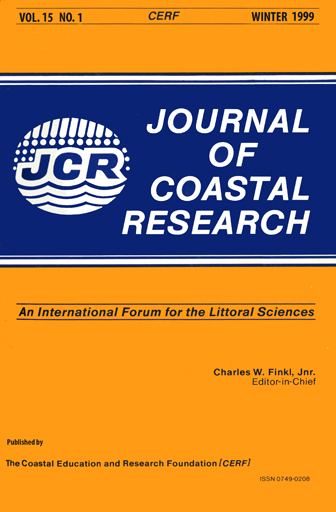Quartz Luminescence as a Light-sensitive Indicator of Sediment Transport in Coastal Processes
Abstract
Samples of sand collected from a beach profile after a storm were studied using thermoluminescence (TL) and optically stimulated luminescence (OSL). Both methods yield signals from quartz which are depleted as a function of the duration of previous light exposure, but with different fractional loss constants for TL vs. OSL. A strong gradient in the TL signal intensity as a function of position on the beach profile was found. This apparently arises because of differences in the duration of natural light exposure experienced during the six hour period after the sand was moved from the nearshore underwater environment onto the beach. Laboratory experiments established that TL signals can distinguish between exposure time differences ranging from about 30 minutes to about 6 hours for the quartz from the locality studied. OSL signals were absent in both offshore and onshore samples, as would be expected because OSL signals can be completely depleted within seconds to minutes for most quartz sediments. Use of TL differences with quartz exposure times is proposed as a tool for study of various coastal depositional processes, with obvious implications for engineering of coastal structures and sand mining. It is hoped that professionals in these areas and sedimentologists might consider how this tool, which should be very simple to apply, might be applicable to their own particular areas of interest.


